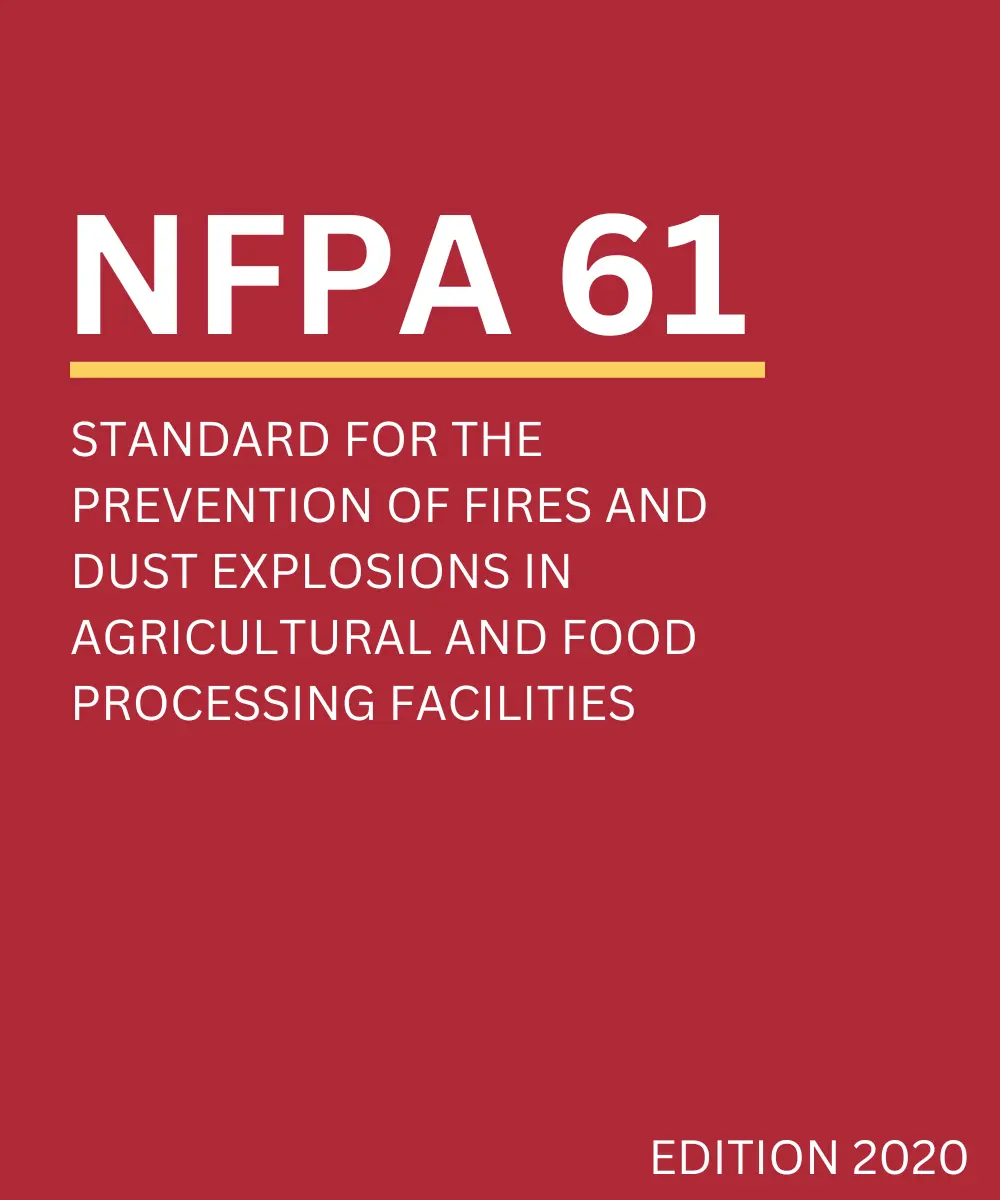
Current Version: 2020
Revision Cycle: TBD
Next Edition: TBD
Introduction
NFPA 61 provides comprehensive guidelines to mitigate the risk of fires and dust explosions in agricultural and food processing facilities. The 2024 edition introduces critical updates to improve safety, dust control practices, and facility operation protocols, ensuring a safer work environment in these high-risk industries.
Key Changes in the Latest Edition
- Enhanced Dust Explosion Prevention: Revised dust hazard assessment and control guidelines.
- Fire Protection Standards: Strengthened requirements for fire suppression and detection systems in facilities with combustible dust.
- Risk Management Updates: New protocols for managing operational risks associated with food processing and agricultural operations.
Notable Features of the Current Version
- Enhanced fire prevention and dust control measures tailored to agricultural and food processing environments.
- Refined hazard analysis techniques to reduce dust explosion risks.
- Clearer, more detailed safety and risk management procedures for facilities.
Practical Implications
Facilities must adopt updated dust control practices and fire prevention measures as per the 2024 edition, ensuring compliance and reducing operational risks in agricultural and food processing environments.
Conclusion
The 2024 edition of NFPA 61 strengthens fire and dust explosion prevention protocols, providing more specific and detailed safety standards to better protect agricultural and food processing operations.
Access NFPA 61 Now!
To learn more about the updated safety standards, consult the NFPA 61 (2024) edition or engage a certified safety professional for compliance and risk mitigation strategies.
Book a free demo
Digitalize your Inspections with ZenFire
- Faster Inspection
- Deficiency Reporting
- Proposals
Company
Support and Services
- (206) 456-8988
- 236 W 27th st Floor 12, New York, NY 10001, United States
- 299 Fremont St APT TH313, San Francisco, CA 94105
- A-302, Nyati Tech Park, New Kalyani Nagar, Wadgaon Sheri, Pune-411014
- hello@zentrades.pro

